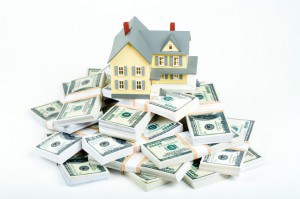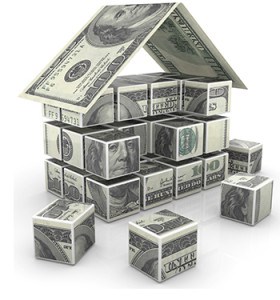Luxury Real Estate is on the Rise
Blog, Market Updates, Real Estate Tips, Selling | Dunham Stewart With more millionaires and billionaires in the world than ever before, pent-up demand and increasing consumer confidence, luxury real estate sales have been surging around the world. Luxury properties are once again one of the hottest real estate market trends, as London, New York and Los Angeles report a burgeoning luxury housing market. According to Spectrem’s Millionaire Corner Affluent Market Insights report for 2014, the number of Millionaire households in the U.S. has reached a record of over 9 million. There are 132,000 households with a net worth over $25 million.
With more millionaires and billionaires in the world than ever before, pent-up demand and increasing consumer confidence, luxury real estate sales have been surging around the world. Luxury properties are once again one of the hottest real estate market trends, as London, New York and Los Angeles report a burgeoning luxury housing market. According to Spectrem’s Millionaire Corner Affluent Market Insights report for 2014, the number of Millionaire households in the U.S. has reached a record of over 9 million. There are 132,000 households with a net worth over $25 million.
Christies International Real Estate released its second annual Luxury Residential Property Market report, looking at the market in 10 of the world’s major markets – Cote d’Azur, Hong Kong, London, Los Angeles, Miami, New York, Paris, San Francisco, Sydney and Toronto. Those markets were compared against each other in terms of sales price, prices per square foot, percentage of non-local and international buyers, and the number of luxury listings per population.
London was rated No. 1 based on its top sale of a property for $101.5 million, and it also had the top per square foot sales average of $4,683. New York and Los Angeles were second and third, respectively, with a significant growth in luxury sales volume. Here in Los Angeles, the mega mansion Fleur de Lys just sold for more than any other house in Los Angeles County ever: $102 million. In an all-cash sale

 What are my Top 5 Tips for First Time Home Sellers?
What are my Top 5 Tips for First Time Home Sellers?
 Fueling this seller’s market are several factors that have unexpectedly converged: For-sale listings are limited, which is pushing prices up at the same time that mortgage rates are rising. That’s created a sense of urgency among buyers, many of whom fear that the door to affordable real estate in their market may be closing.Many sellers are still hesitant about putting their house up for sale. Where are prices headed? Where are interest rates headed? Can buyers qualify for a mortgage? These are all valid questions. However, there are several reasons to sell your home sooner rather than later. Here are five of those reasons.
Fueling this seller’s market are several factors that have unexpectedly converged: For-sale listings are limited, which is pushing prices up at the same time that mortgage rates are rising. That’s created a sense of urgency among buyers, many of whom fear that the door to affordable real estate in their market may be closing.Many sellers are still hesitant about putting their house up for sale. Where are prices headed? Where are interest rates headed? Can buyers qualify for a mortgage? These are all valid questions. However, there are several reasons to sell your home sooner rather than later. Here are five of those reasons.
 The majority of housing markets are entering the 2014 home buying season in significantly better shape than they were one year ago. The outlook for a more abundant, more affordable selection of homes for sale this spring improved considerably in February. This is signaling growing seller optimism and a strong, early start to the spring home-buying season. Sellers in most markets are responding to the price increases of the past year, suggesting they are increasingly optimistic about the housing recovery and the underlying strength of market demand through 2014, according to the latest February data from realor.com.
The majority of housing markets are entering the 2014 home buying season in significantly better shape than they were one year ago. The outlook for a more abundant, more affordable selection of homes for sale this spring improved considerably in February. This is signaling growing seller optimism and a strong, early start to the spring home-buying season. Sellers in most markets are responding to the price increases of the past year, suggesting they are increasingly optimistic about the housing recovery and the underlying strength of market demand through 2014, according to the latest February data from realor.com.
 Vastly improved home prices over the past five years have changed the landscape of California’s distressed housing market, which is now just a fraction of what it was during the Great Recession, the California Association of Realtors said today. The number of short sales and bank-sold homes is down. Way down. The numbers have dropped from 69.5 percent of all homes sold in 2009 to 15.6 percent today. During the same time period, California’s median home price has soared more than 64 percent. Significant home price appreciation over the past five years has lifted the market value of many underwater homes, and as a result, many homeowners have gained significant equity in their homes, resulting in fewer short sales and foreclosures. The statewide share of equity sales hit a high of 86.4 percent in November 2013 and has been above 80 percent for the past seven months.
Vastly improved home prices over the past five years have changed the landscape of California’s distressed housing market, which is now just a fraction of what it was during the Great Recession, the California Association of Realtors said today. The number of short sales and bank-sold homes is down. Way down. The numbers have dropped from 69.5 percent of all homes sold in 2009 to 15.6 percent today. During the same time period, California’s median home price has soared more than 64 percent. Significant home price appreciation over the past five years has lifted the market value of many underwater homes, and as a result, many homeowners have gained significant equity in their homes, resulting in fewer short sales and foreclosures. The statewide share of equity sales hit a high of 86.4 percent in November 2013 and has been above 80 percent for the past seven months.
 A recent survey of over 100 real estate experts and investment and market strategists asked panelists to predict the path of home values through 2018. Even the pessimists expect home prices to rise for the next five years. The idea that homes are a good stable investment has largely been debunked, in particular by Yale economist Robert Shiller. As usual, he is reluctant to declare that home prices had bottomed. With that said, home prices are impressively up 23% from their March 2012 lows.
A recent survey of over 100 real estate experts and investment and market strategists asked panelists to predict the path of home values through 2018. Even the pessimists expect home prices to rise for the next five years. The idea that homes are a good stable investment has largely been debunked, in particular by Yale economist Robert Shiller. As usual, he is reluctant to declare that home prices had bottomed. With that said, home prices are impressively up 23% from their March 2012 lows.
 So you’ve saved up your down payment, rates are about as low as you think they’ll go, and you’re ready to start home shopping, but it’s winter – and your pals are telling you that should what till spring. Is that really true? Based on prices, mortgage rates and soaring rents, there may have never been a better time in real estate history to purchase a home than right now. Here are five reasons purchasers should consider buying before the spring market arrives:
So you’ve saved up your down payment, rates are about as low as you think they’ll go, and you’re ready to start home shopping, but it’s winter – and your pals are telling you that should what till spring. Is that really true? Based on prices, mortgage rates and soaring rents, there may have never been a better time in real estate history to purchase a home than right now. Here are five reasons purchasers should consider buying before the spring market arrives:
 Hybrid ARMs continued to be the most popular loan product offered by lenders and chosen by ARM borrowers according to Freddie Mac’s 30th Annual Adjustable-Rate Mortgage (ARM) Survey of prime loan offerings, which was conducted January 6 to January 10,
Hybrid ARMs continued to be the most popular loan product offered by lenders and chosen by ARM borrowers according to Freddie Mac’s 30th Annual Adjustable-Rate Mortgage (ARM) Survey of prime loan offerings, which was conducted January 6 to January 10,
 Record low inventories last January set the stage for a selling season featuring soaring prices, bidding wars and the outbreak of price bubbles in several California markets. The improved conditions for sellers prompted many to list their homes, but not enough to measurable improve the inventory picture as real estate markets go into hibernation to prepare for the 2014 season. November listings were only 0.18 percent above levels of November 2012, when inventories in the Realtor.com database had already begun the dramatic decline that culminated in the spring, 2013 shortages. With inventory levels enter the winter at virtually the same level last year, should sellers remain leery of the market, inventories may not restock sufficiently to meet buyer demand next spring, setting the stage for a repeat of last year’s wild spring and summer conditions. Despite the remarkable price gains in 2013-exceeding 13 percent through the third quarter in the latest Case-Shiller numbers and the freeing of millions of owners from negative equity sellers seem to be pulling back. Recent consumer surveys have tracked a significant decline in consumer confidence in home price expectations. In addition, the share of those who expect mortgage rates to climb in the next 12 months remained at an elevated level since it spiked in June.
Record low inventories last January set the stage for a selling season featuring soaring prices, bidding wars and the outbreak of price bubbles in several California markets. The improved conditions for sellers prompted many to list their homes, but not enough to measurable improve the inventory picture as real estate markets go into hibernation to prepare for the 2014 season. November listings were only 0.18 percent above levels of November 2012, when inventories in the Realtor.com database had already begun the dramatic decline that culminated in the spring, 2013 shortages. With inventory levels enter the winter at virtually the same level last year, should sellers remain leery of the market, inventories may not restock sufficiently to meet buyer demand next spring, setting the stage for a repeat of last year’s wild spring and summer conditions. Despite the remarkable price gains in 2013-exceeding 13 percent through the third quarter in the latest Case-Shiller numbers and the freeing of millions of owners from negative equity sellers seem to be pulling back. Recent consumer surveys have tracked a significant decline in consumer confidence in home price expectations. In addition, the share of those who expect mortgage rates to climb in the next 12 months remained at an elevated level since it spiked in June.
 More home owners will be are edging above water with their mortgages 2014. The number of underwater homes continues to shrink , regaining equity during the third quarter. A house is said to have negative equity or be underwater when more is owed on the mortgage than the market value of the property. Negative equity can occur because of a decline in value, an increase in mortgage debt or a combination of both. Currently, about 13 percent of homes with a mortgage remain in negative equity compared to 14.7 percent the end of the second quarter. An estimated 42.6 million homes in the U.S. have positive equity. About 20 percent of those homes, however, have less than 20 percent of equity or what is considered “under-equitied”. This according to CoreLogic’s latest negative equity analysis reports. The majority of the homes that have positive equity are in the high-end housing market. Rising home prices continued to help homeowners regain their lost equity in the third quarter of 2013. “We should see a further rebound in consumer confidence and economic growth in 2014 as more homeowners escape the negative equity trap,” said Anand Nallathambi, president and CEO of CoreLogic.
More home owners will be are edging above water with their mortgages 2014. The number of underwater homes continues to shrink , regaining equity during the third quarter. A house is said to have negative equity or be underwater when more is owed on the mortgage than the market value of the property. Negative equity can occur because of a decline in value, an increase in mortgage debt or a combination of both. Currently, about 13 percent of homes with a mortgage remain in negative equity compared to 14.7 percent the end of the second quarter. An estimated 42.6 million homes in the U.S. have positive equity. About 20 percent of those homes, however, have less than 20 percent of equity or what is considered “under-equitied”. This according to CoreLogic’s latest negative equity analysis reports. The majority of the homes that have positive equity are in the high-end housing market. Rising home prices continued to help homeowners regain their lost equity in the third quarter of 2013. “We should see a further rebound in consumer confidence and economic growth in 2014 as more homeowners escape the negative equity trap,” said Anand Nallathambi, president and CEO of CoreLogic.



